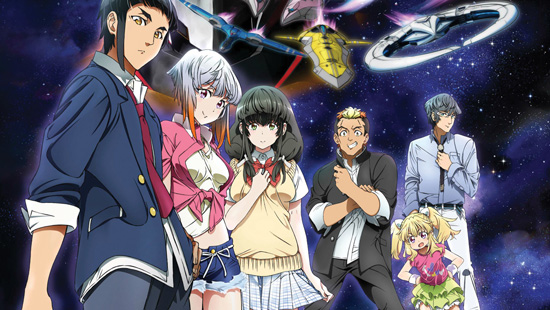
Ever since it dared to use language to define its surroundings and itself, humanity distanced itself from a pure world. At least that’s what Kenzaki Sougon believes. Unfortunately for the unwittingly inherent transgressors of the present day, Sougon’s got his hands on syringes filled with a substance known as Nest Virus. It conjures M.J.B.K. (mojibake) that will make the words and all of the concepts to which they are linked through kanji disappear.
Who’s to stop this social media-made madman turned dark magician? Why, the plucky youngsters enrolled in the Verbalism Club at the Shirobaco Anime Collabo Café of course! These select and talented few, innately endowed with Verbalism ability, battle words-made-monsters via vectors—craft stolen from Sougon himself—that (very, erm, graphically) combine into fighting robots of various form and function.
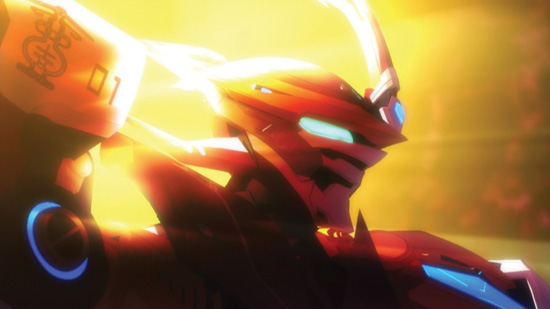
Despite being the third installment in the Aquarion franchise, Aquarion Logos proves an easy investment. The introduction is a largely dismissible ~30-minute crossover of the first two iterations that acquaints newcomers with the basics of mechanics, imagery, and tone. But from there on in, it’s an entirely new legend directed by Hidekazu Sato, who just so happened to storyboard one episode of each of the previous Aquarion installments. Even if you don’t dig giant robots, this is an anime for you if you’re a fan of farce. As soon as the latter part of the first episode and definitely by the end of the OP for the second, you’ll realize that taking itself seriously is not this show’s forte.
The draw and wit behind Aquarion Logos is, befittingly enough, the writing. The characters, concept, situations, and dialogue (complete with puns both visual and otherwise) are written to take jabs at expectations and tropes but not only on an otaku level. Meaning that anyone can have a yuk at the expense of mecha and super sentai without being all that familiar with them.
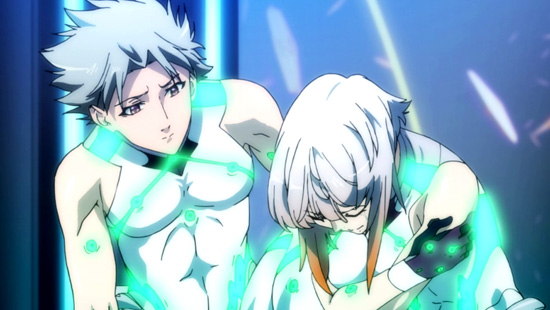
This is more or less embodied in the heroes working for an organization known as DEAVA (pronounced diva) and one of its members, Akira Kaibuki, owning a running gag continually truncated for its hamminess and frequency. Of course, the farce is lightened little by little each episode until it becomes a fairly enthralling story.
There’s a known Nest agent in DEAVA’s midst who’s fighting alongside them, and whether or not she’s following orders or her own heart is the main conflict of the show. The other drama, the effects of word corrosion (what happens when the M.J.B.K. grows in influence on the outside world), tends to be a Lifetime movie of the week. Each episode works in a life lesson—the strength of the working class, the hurtful power of words in an anonymous space, the downfalls of obsession—that plays out more or less to get the main characters from A to B instead of actually focusing on the issue. There’s also a love triangle, but it’s a background affair and is mainly there for gags but perhaps a bit of metaphor for conflicts of the heart.
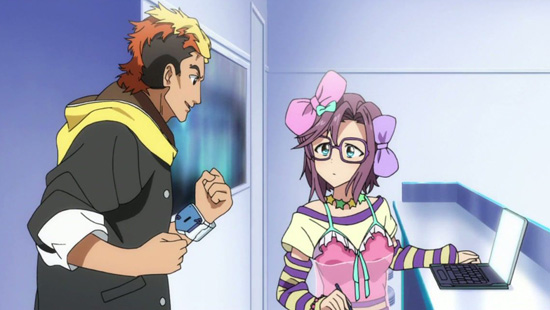
The robots, like the M.J.B.K., can be just about anything, but ultimately they are extensions of their core. Whether it’s a tri-fly-headed M.J.B.K. representing “insect” or a ballerina-trained pilot making a robot pirouette, the show is a consistently fun watch for its literal nature. And aside from the hammy flare of the CG, there’s at least one visually impressive episode, “Clear them! The Inviting Shadows” (as of Episode 12 anyway) that, again, distinguishes itself through its own concept (heavy shadowing).
 Need another reason to watch? How about an OP song composed and arranged by Yoko Kanno (Cowboy Bebop, Terror in Resonance) and sung by May’n (whom I can’t help but think was chosen for having performed Sheryl Nome’s songs in Macross Frontier). Aquarion Logos has a lot more to offer than I thought it would, including a lot of intentionally scripted/storyboarded laughs. All that’s left to say is, “AQAURRIOOOOOOOOOOOOOOOON!”
Need another reason to watch? How about an OP song composed and arranged by Yoko Kanno (Cowboy Bebop, Terror in Resonance) and sung by May’n (whom I can’t help but think was chosen for having performed Sheryl Nome’s songs in Macross Frontier). Aquarion Logos has a lot more to offer than I thought it would, including a lot of intentionally scripted/storyboarded laughs. All that’s left to say is, “AQAURRIOOOOOOOOOOOOOOOON!”
Studio/Company: FUNimation
Available: Now (Streaming)
Rating: TV-14


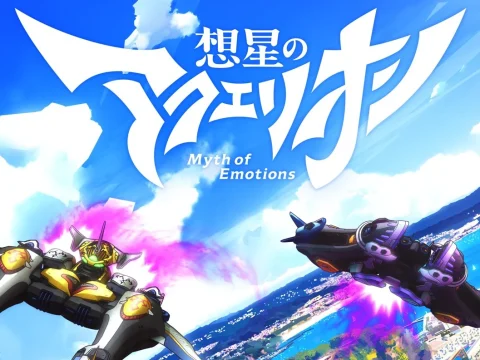

![SSSS.Dynazenon [Anime Review] SSSS.Dynazenon [Anime Review]](https://otakuusamagazine.com/wp-content/uploads/2021/08/16-9-SSSS.Dynazenon_Key_Visual_3.5-480x360.jpg)
![Back Arrow [Anime Review] Back Arrow [Anime Review]](https://otakuusamagazine.com/wp-content/uploads/2021/07/ba15-02686-480x360.jpg)

